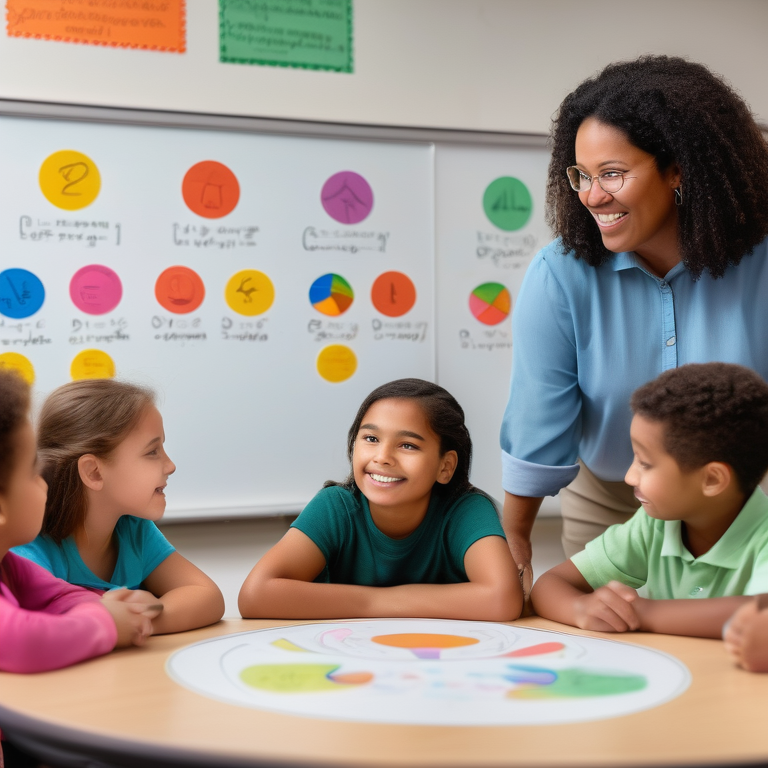Understanding Sexuality Education for Different Age Groups

Key Highlights
- Comprehensive sexuality education is important for all age groups to promote sexual health, understanding of reproductive health, and respectful relationships.
- Early childhood sexuality education focuses on body awareness, privacy, and addressing questions about where babies come from.
- Pre-adolescent sexuality education includes discussions about puberty, emotional changes, and promoting respectful interactions and consent.
- Teenage sexuality education covers navigating relationships, understanding sexual identity, and promoting sexual health and preventive practices.
- Young adult sexuality education focuses on sexual rights and responsibilities, addressing sexual violence, and promoting sexual health and well-being.
- Adult sexuality education continues to emphasize sexual health and well-being, exploring topics on sexual pleasure and satisfaction.
Introduction
Sexuality education is an essential part of a comprehensive approach to promoting sexual health, ensuring the well-being of individuals, and fostering respectful relationships. It is a lifelong process that starts from early childhood and continues throughout adulthood. Understanding sexuality education for different age groups is crucial to provide age-appropriate information and support individuals in navigating their sexual journey, especially in preventing and combating sexual abuse.
Sexuality education goes beyond the traditional emphasis on reproductive health and addresses a wide range of topics, including relationships, consent, sexual orientation, gender identity, and preventive practices. It also covers important topics such as domestic abuse, forced marriage, and honour-based violence. It aims to empower individuals to make informed decisions, develop healthy relationships, and foster a positive attitude towards their own bodies and the bodies of others.
This blog will explore the importance of sexuality education across different age groups and provide an overview of the key topics covered in each stage of development. From early childhood to adulthood, sexuality education evolves to meet the changing needs and experiences of individuals.
By understanding the specific needs and challenges faced by different age groups, we can ensure that sexuality education remains relevant, inclusive, and supportive throughout a person’s life. Let’s dive deeper into the importance of sexuality education across age groups and explore the key highlights at each stage of development.
The Importance of Sexuality Education Across Age Groups
Sexuality education plays a crucial role in promoting sexual health, understanding reproductive health, and fostering respectful relationships across all age groups. It provides individuals with the knowledge, skills, and attitudes necessary to navigate their sexual journey with confidence and respect. From early childhood to adulthood, comprehensive sexuality education (CSE) equips individuals with the tools to make informed decisions, form healthy relationships, prevent sexual violence, and promote sexual well-being. By addressing age-specific needs and concerns, CSE ensures that individuals have the necessary information and support to develop a positive and healthy attitude towards their own bodies and relationships.
Defining Sexuality Education: A Brief Overview
Sexuality education encompasses a comprehensive approach to promoting sexual health and well-being throughout a person’s life. It goes beyond the traditional focus on reproductive health and encompasses a wide range of topics, including sexual orientation, gender identity, consent, relationships, and preventive practices. Sexuality education aims to provide individuals with accurate information, skills, and attitudes to make informed decisions, develop healthy relationships, and foster a positive attitude towards their own bodies and the bodies of others.
Sexuality education also addresses the social and cultural factors that shape our understanding of sexuality, including societal norms, values, and human rights. It promotes respect for diversity, inclusivity, and the rights of all individuals to live free from discrimination and violence. By adopting a comprehensive approach to sexuality education, we can create a supportive and inclusive environment that empowers individuals to navigate their sexual journey with confidence and respect for their wellbeing.
Why Age-Appropriate Sexuality Education Matters
Age-appropriate sexuality education is essential to address the specific needs and concerns of individuals at different stages of development. Providing information and support that is tailored to a person’s age and level of understanding, including young people up to 16 years old, ensures that they receive the necessary tools to make informed decisions, develop healthy relationships, and promote sexual well-being.
Starting sexuality education at an early age allows children to develop a positive attitude towards their bodies, understand boundaries, and learn about healthy relationships. Pre-adolescent sexuality education focuses on addressing the physical and emotional changes of puberty, promoting respectful interactions, and teaching consent. Teenage sexuality education delves into topics such as navigating relationships, understanding sexual identity, and promoting sexual health and preventive practices.
As individuals enter young adulthood, sexuality education expands to cover topics like sexual rights and responsibilities, addressing sexual violence, and promoting sexual health and well-being. Finally, adult sexuality education continues to emphasize sexual health and well-being, exploring topics on sexual pleasure, satisfaction, and adult relationships.
By providing age-appropriate sexuality education throughout a person’s life, we can ensure that individuals have the knowledge and skills to make informed decisions, form healthy relationships, and navigate their sexual journey with confidence and respect.
Early Childhood Sexuality Education (Ages 3-8)
Early childhood is a critical period for introducing concepts of body awareness, privacy, and basic understanding of reproduction. Sexuality education for children aged 3-8 focuses on creating a safe and supportive environment where children can develop a positive attitude towards their bodies and understand boundaries. It introduces age-appropriate concepts of body awareness, privacy, and appropriate touch. Additionally, it addresses questions children may have about where babies come from, providing simple and accurate information to foster understanding.
Introducing Concepts of Body Awareness and Privacy
Early childhood sexuality education for ages 3-8 includes introducing concepts of body awareness and privacy, as well as sexual behaviour. This stage of development focuses on creating a safe and supportive environment where children can develop a positive attitude towards their bodies and understand boundaries. Here are some key aspects of early childhood sexuality education:
- Body awareness: Teaching children about the different parts of their bodies and their functions.
- Privacy: Helping children understand the concept of privacy and the importance of personal boundaries.
- Appropriate touch: Teaching children about the difference between appropriate and inappropriate touch.
- Consent: Introducing the concept of consent in simple terms, emphasizing the importance of asking for permission before touching or hugging others.
By introducing these concepts at an early age, children develop a foundation of knowledge and understanding that will support healthy attitudes towards their bodies and relationships as they grow older.
Addressing Questions About Where Babies Come From
Early childhood sexuality education also addresses questions children may have about where babies come from. It is important to provide simple and accurate information to foster understanding and address any misconceptions. Here are some key points to address:
- Reproduction: Explain how babies are created through the joining of an egg and a sperm.
- Age-appropriate language: Use language that is appropriate for their age and level of understanding.
- Baby boomers: Mention that parents or caregivers play an important role in creating and caring for babies.
- Emotional support: Reassure children that they can always ask questions and get support from trusted adults.
By addressing these questions with age-appropriate information, early childhood sexuality education helps children develop a basic understanding of reproduction and fosters a healthy attitude towards their bodies.
Pre-Adolescent Sexuality Education (Ages 9-12)
Pre-adolescent sexuality education for ages 9-12, also known as pre-teens, focuses on addressing the physical and emotional changes of puberty, promoting respectful interactions, and teaching consent. It is a crucial stage where children start to develop a deeper understanding of their bodies and relationships. By providing age-appropriate information and support, pre-adolescent sexuality education prepares 9 to 12 year olds for the challenges and changes they will face during adolescence.
Discussing Puberty and Emotional Changes
Pre-adolescent sexuality education (ages 9-12) includes discussions about puberty and emotional changes. Here are some key aspects to cover:
- Physical changes: Explain the physical changes that occur during puberty, such as growth spurts, changes in body shape, and the development of secondary sexual characteristics.
- Emotional changes: Discuss the emotional changes that accompany puberty, such as mood swings and increased interest in romantic relationships.
- Hygiene and self-care: Teach about personal hygiene practices, including the importance of regular bathing, using deodorant, and taking care of changing bodies.
- Body image: Address body image concerns and promote a positive attitude towards one’s changing body.
By discussing these topics, pre-adolescent sexuality education helps children navigate the physical and emotional changes of puberty with confidence and understanding.
Promoting Respectful Interactions and Consent
Respectful interactions and consent are crucial topics in pre-adolescent sexuality education. It is important to teach children about the importance of treating others with respect and understanding the concept of consent. Here are some key points to cover:
- Respectful interactions: Discuss the importance of treating others with kindness, empathy, and respect, including friends, family, and peers.
- Consent: Teach children about the importance of obtaining consent before engaging in any physical contact or activities, emphasizing that no one should touch them without their consent.
- Boundaries: Help children understand personal boundaries and teach them how to set and respect boundaries in their relationships.
- Peer pressure: Address the topic of peer pressure and provide strategies for handling situations where they may feel pressured to engage in activities they are uncomfortable with.
By promoting respectful interactions and teaching consent, pre-adolescent sexuality education empowers children to navigate their relationships with respect and understanding.
Teenage Sexuality Education (Ages 13-18)
Teenage sexuality education focuses on navigating relationships, understanding sexual identity, and promoting sexual health and preventive practices. It is a critical period where teenagers explore their identity, form intimate relationships, and make decisions about their sexual health. By providing age-appropriate information and support, teenage sexuality education equips teenagers with the knowledge and skills to make informed decisions, develop healthy relationships, and maintain their sexual health in the UK.
Navigating Relationships and Sexual Identity
Teenage sexuality education includes discussions on navigating relationships and understanding sexual identity. Here are some key aspects to cover:
- Healthy relationships: Teach teenagers about the characteristics of healthy relationships, including respect, communication, consent, and mutual support.
- Sexual identity: Address the topic of sexual orientation and gender identity, providing a safe and inclusive environment for teenagers to explore and understand their own identities.
- Inclusive education: Emphasize the importance of respecting and accepting diverse sexual orientations and gender identities.
- Peer pressure and boundaries: Discuss strategies for navigating peer pressure, setting boundaries, and making informed decisions about sexual activity.
By addressing these topics, teenage sexuality education empowers teenagers to navigate their relationships and develop a positive and healthy understanding of their own sexual identity.
Understanding Sexual Health and Preventive Practices
Teenage sexuality education also focuses on promoting sexual health and preventive practices. Here are some key points to cover:
- Safer sex: Provide information about contraception methods, including condoms and hormonal methods, and emphasize the importance of using protection to prevent sexually transmitted infections (STIs) and unintended pregnancies.
- STI prevention: Educate teenagers about the risks of STIs, how they are transmitted, and the importance of regular testing and treatment.
- Consent and healthy boundaries: Reinforce the importance of consent in sexual relationships and discuss how healthy boundaries contribute to overall sexual well-being.
- Communication skills: Teach teenagers effective communication skills to negotiate safer sex practices and make informed decisions about their sexual health.
By promoting sexual health and preventive practices, teenage sexuality education empowers teenagers to make responsible choices and maintain their well-being.
Young Adult Sexuality Education (Ages 19-24)
Young adult sexuality education focuses on deepening knowledge on sexual rights and responsibilities, addressing sexual violence, and promoting sexual health and well-being. It is a time when young adults explore their independence, form intimate relationships, and make decisions about their sexual and reproductive health. By providing age-appropriate information and support, young adult sexuality education equips individuals with the knowledge and skills to navigate their sexual journey and maintain their sexual health.
Deepening Knowledge on Sexual Rights and Responsibilities
Young adult sexuality education includes deepening knowledge on sexual rights and responsibilities. Here are some key aspects to cover:
- Sexual rights: Educate young adults about their sexual rights, including the right to consent, the right to access sexual health services, and the right to live free from discrimination and violence.
- Human rights and gender equality: Discuss the intersection of sexual rights with human rights and gender equality, emphasizing the importance of creating an inclusive and equitable society.
- Consent and healthy relationships: Reinforce the importance of mutual consent, communication, and respect in sexual relationships.
- Responsible sexual behavior: Promote responsible sexual behavior, including regular STI testing, contraception use, and open communication with sexual partners.
By deepening knowledge on sexual rights and responsibilities, young adult sexuality education empowers individuals to advocate for their rights, make informed decisions, and foster healthy and respectful relationships.
Addressing Sexual Violence and Safety Measures
Addressing sexual violence and safety measures is a crucial aspect of young adult sexuality education. Here are some key points to cover:
- Sexual violence: Educate young adults about the prevalence and impact of sexual violence, including sexual assault and harassment. Provide information on how to recognize and respond to these forms of violence.
- Safety measures: Discuss safety measures to reduce the risk of sexual violence, including setting and respecting boundaries, practicing open communication, and accessing support services.
- Consent and healthy relationships: Emphasize the importance of consent, communication, and respect in all relationships, and provide strategies for addressing and preventing sexual violence.
- Online safety: Educate young adults about online safety, including the risks of sharing personal information online and strategies to protect themselves from online harassment and abuse.
By addressing sexual violence and promoting safety measures, young adult sexuality education empowers individuals to navigate their relationships with awareness, respect, and safety.
Adult Sexuality Education (25 years and above)
Adult sexuality education focuses on continuing education on sexual health and well-being, exploring topics on sexual pleasure and satisfaction, and addressing the unique needs and experiences of adults. It is a stage where individuals continue to evolve in their sexual journey and seek information and support to maintain a healthy and fulfilling sexual life.
Continuing Education on Sexual Health and Well-being
Adult sexuality education aims to provide individuals with ongoing education on sexual health and well-being. Here are some key points to cover:
- Sexual health: Provide information on maintaining sexual health, including regular STI testing, contraception methods, and sexual health services.
- Well-being: Address the connection between sexual well-being and overall well-being, including mental health, emotional intimacy, and self-care.
- Lifelong learning: Encourage adults to continue learning about their own bodies, sexual pleasure, and new developments in sexual health and well-being.
- Accessing support: Provide information on available resources, support groups, and counseling services for adults seeking guidance and support related to their sexual health.
By continuing education on sexual health and well-being, adult sexuality education empowers individuals to maintain a positive and fulfilling sexual life.
Exploring Topics on Sexual Pleasure and Satisfaction
Exploring topics on sexual pleasure and satisfaction is an important aspect of adult sexuality education. Here are some key points to cover:
- Sexual pleasure: Encourage individuals to explore their own sexual desires and preferences, and promote a positive attitude towards sexual pleasure.
- Communication and consent: Emphasize the importance of open communication, consent, and mutual respect in sexual relationships to enhance pleasure and satisfaction.
- Adult relationships: Discuss the dynamics of adult relationships, including intimacy, emotional connection, and maintaining healthy sexual relationships.
- Sexual satisfaction: Address the various factors that contribute to sexual satisfaction, including physical well-being, emotional intimacy, and sexual communication.
By exploring topics on sexual pleasure and satisfaction, adult sexuality education empowers individuals to embrace their sexual desires, communicate their needs, and foster satisfying and fulfilling adult relationships.
Conclusion
Sexuality education is crucial at every stage of life. From early childhood to adulthood, understanding body awareness, consent, and sexual health plays a pivotal role in shaping individuals’ well-being. Parents, schools, and communities all have a part to play in providing age-appropriate information and support. By promoting respect, knowledge, and open communication, we can create a society that values healthy relationships and personal boundaries. If you have any questions or insights to share on this topic, feel free to comment below and continue the conversation. Let’s work together to foster a culture of understanding and empowerment around sexuality education.
Frequently Asked Questions
At what age should sexuality education begin?
Sexuality education should begin at an early age, taking into account a child’s level of understanding. Starting with age-appropriate concepts, such as body awareness and privacy, provides a foundation for healthy attitudes towards sexuality throughout development. Caregivers play a crucial role in supporting sexuality education at home.
How can parents support sexuality education at home?
Parents can support sexuality education at home by creating an open and supportive environment for discussions about sexuality. They can provide age-appropriate information, answer questions honestly, and promote healthy attitudes towards bodies, relationships, and consent.
What role do schools play in sexuality education?
Schools play a vital role in providing comprehensive sexuality education. They can offer age-appropriate information, promote respectful relationships, address issues like bullying and social media, and provide a safe space for discussions about sexuality.
How does sexuality education differ around the world?
Sexuality education varies around the world due to cultural differences, social norms, and legal frameworks. It is influenced by factors such as gender norms, human rights perspectives, and the inclusion of comprehensive sexuality education in national curricula.





